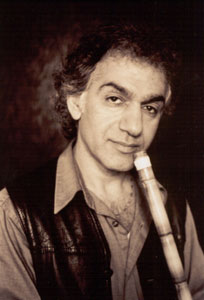By John Kruth
I’ve got this crazy cat that likes to sleep in the bathroom sink. She lies there for hours on end during warm summer afternoons with her head gently resting on the edge while her tail dangles over the other side, twitching randomly. Most of the time she appears quite relaxed, the cool marble contour of the bowl perfectly cradles her long black and white spotted body as she drifts off into what seems like a deep meditative state.
Then suddenly her green eyes pop open to take stock of the outer world. After all, she shares her small Manhattan apartment with a pair of humans, a couple of other cats and a rather rambunctious pug, so she never knows what might happen next. Then there’s enough street noise – ambulance sirens, car alarms, whooshing buses and a constant stream of people going by our window – to distract even the greatest of meditators. But it seems to me that the source of my cat’s curiosity is the sound that occasionally reverberates up from the drainpipe. She’ll crouch over the drain,
with her head cocked quizzically, searching for (and ready to dismember) the mysterious source of gurgling sounds that tickle her ears like a warm breath from God’s nostril.
Simply put, air, whatever its source, echoing through a pipe can create sound waves that have a way of rousing both cats and people to new and different states of awareness and Omar Faruk Tekbilek is a master practitioner of such an art.
“My breath is the heart of the matter,” he once said. “I watch my breath and thank God for breathing. The life that you breathe is the source of happiness; it is the secret. The breath comes from God and passes through us. So I breathe and I am with myself and that motivation is daily habit.”
Most meditation and martial arts practitioners tend to place a lot emphasis on exhaling. They say if you’re really accomplished you can shape your world by concentrating on or “following” the flow of the out breath. Consider the case of Dock Ellis, the champion pitcher for the Pittsburgh Pirates who hurled a no hitter against the San Diego Padres on June 12, 1970. Ellis thought he had the day off, so around noon he dropped some LSD just for giggles. But an hour later, his girlfriend, while perusing the newspaper, discovered that Dock was scheduled to pitch that day. Ellis soon found himself on the mound with the ball in his hand, zeroing in on the catcher’s glove.
Fourteen years later Dock finally shared the details of his strange saga with the press. It seems that as he released the ball, he’d follow it with a long stream of air as it sailed past the bewildered batter and right into the catcher’s mitt. Whether through luck, a heightened state of awareness or Zen-like breath-control, Ellis came out ahead 2-0 in the end. So you see, it’s very important to keep breathing no matter what you’re up against. The breath is integral; we just can’t do much without that constant stream of air that automatically comes rushing into our lungs like the high tide at the Bay of Fundy, then pours out from our nostrils a moment later, without the slightest regard from our busy old brains.
Ahh the brain and its constant transmission of static. It seems that people will do nearly anything to avoid getting to know their own mind. The brave among us practice meditation in hopes of better understanding our brains that wildly see-saw with mixed up emotions, grasp at memories, fumble with desires, wrestle with anxiety, worry about the future and generally cling to all sorts of residue (old songs, stock averages, the capital of Idaho) that messes with the Tao of our daily lives.
And that’s where Omar Faruk Tekbilek’s music comes in. Long breathy phrases pour from Faruk’s flute and float into your ears with notes that swirl like the wind in a Van Gogh painting, scouring your brain like a big pipe-cleaner that effortlessly curves with each contour until reaching into its innermost recesses. Those low, husky tones practically air-condition the mind! And one thing that ballplayers, Buddhists and cats will all tell you is, you gotta keep a cool head.
A couple years ago while strolling down Prince Street in Soho, the glint of a little  Moroccan souk’s window caught my eye. Once lured inside, I soon discovered, among an array of exotic trinkets, lanterns and rugs, a long simple tube of bamboo that made me lay my money down. This was not just another flute for my ever-growing collection. It was a ney – the mother of all flutes.
Moroccan souk’s window caught my eye. Once lured inside, I soon discovered, among an array of exotic trinkets, lanterns and rugs, a long simple tube of bamboo that made me lay my money down. This was not just another flute for my ever-growing collection. It was a ney – the mother of all flutes.
If the sounds of Western civilization are encoded within New York City apartment plumbing, and the echo of a roaring ocean is captured in a seashell, then you will find the ancient melodies of distant deserts in the ney. But unlike the shell that gives up its timeless song of the sea to anyone curious enough to pick it up and listen, only a highly skilled musician can release the bittersweet sounds of the ney. Its embouchure is a bit tricky to say the least, as there is no mouthpiece per se, as with western flutes. You must form the mouthpiece yourself with the fine edge of the flute and your lips, which gives the ney a unique and personal tone. In Tekbilek’s case, that tone is as personal as fingerprints.
Omar Faruk Tekbilek was born of Egyptian/Turkish parents and grew up in Adana, Turkey. Adana is a city of parks and gardens, situated on the borderline of east and west, and known for its highly intellectual atmosphere. At a young age, Faruk was exposed to a diverse mix of cultures, listening to Arabic, Greek and various musicians of the Mediterranean Diaspora, who would travel through his hometown while performing at summer festivals.
One of his six brothers, Hadji (who Faruk claims as his “guru”), played the flute and inspired him to read scales and learn the complex rhythms of Turkish music. By age eight or nine Tekbilek had begun to study the kaval (a distant cousin of the ney). At twelve, while in school training for the priesthood, Faruk realized while praying that his state of mind was identical to that of playing the ney. Ultimately (and lucky for us) Faruk would choose music as his life’s calling over dedicating himself to religious practice.
“Playing is like prayer,” Tekbilek once said. “I found that praying and playing is the same attitude of mind. I am using my breath or energy just radiating out with the joy, with the experience of that moment.”
For Faruk, music and Sufism are so deeply entwined they are inseparable. Through his friendship with Ismet Siral, a saxophone player and philosopher, Faruk realized the importance of not just playing for human beings but for animals, birds and trees, as well as “drawing pictures” with sound. While stuck in a thankless factory job when he first emigrated to the U.S., Faruk found inspiration everywhere. To his ears everything is alive, humming with music. Within the soul-numbing drone of factory machinery Tekbilek claimed to hear saxophones and trumpets singing.
This unique point of view and poetic approach to life, along with his well-honed musical skills, would eventually lead Faruk to collaborate with a roster of first class world musicians and improvisational pioneers including: multi-kulti/multi-instrumentalist/jazz trumpeter Don Cherry, avant garde composer/keyboardist Karl Berger, visionary producer/bassist Bill Laswell, qawwali/vocal juggernaut Nusrat Fateh Ali Khan, the fantastic frame drummer Glen Velez, oud/violin master Simon Shaheen, and Ginger Baker, the thunderous drummer of the legendary rock power trio, Cream. Whether playing for meditation or to inspire the sensual swoop and sway of belly dancers, Tekbilek’s mesmerizing ney is ultimately an instrument of peace. “If we see each other as children of one Being and if music can help us realize that, there would be no discrimination and a chance for peace,” he proclaimed.
Inscribed on Faruk’s flute box is a charming and useful nugget of philosophy – ‘Life is a mystery to live, not a problem to solve.’ So keep your ears and heart open to the mysteries constantly unraveling around you and by all means keep breathing.
Links:





